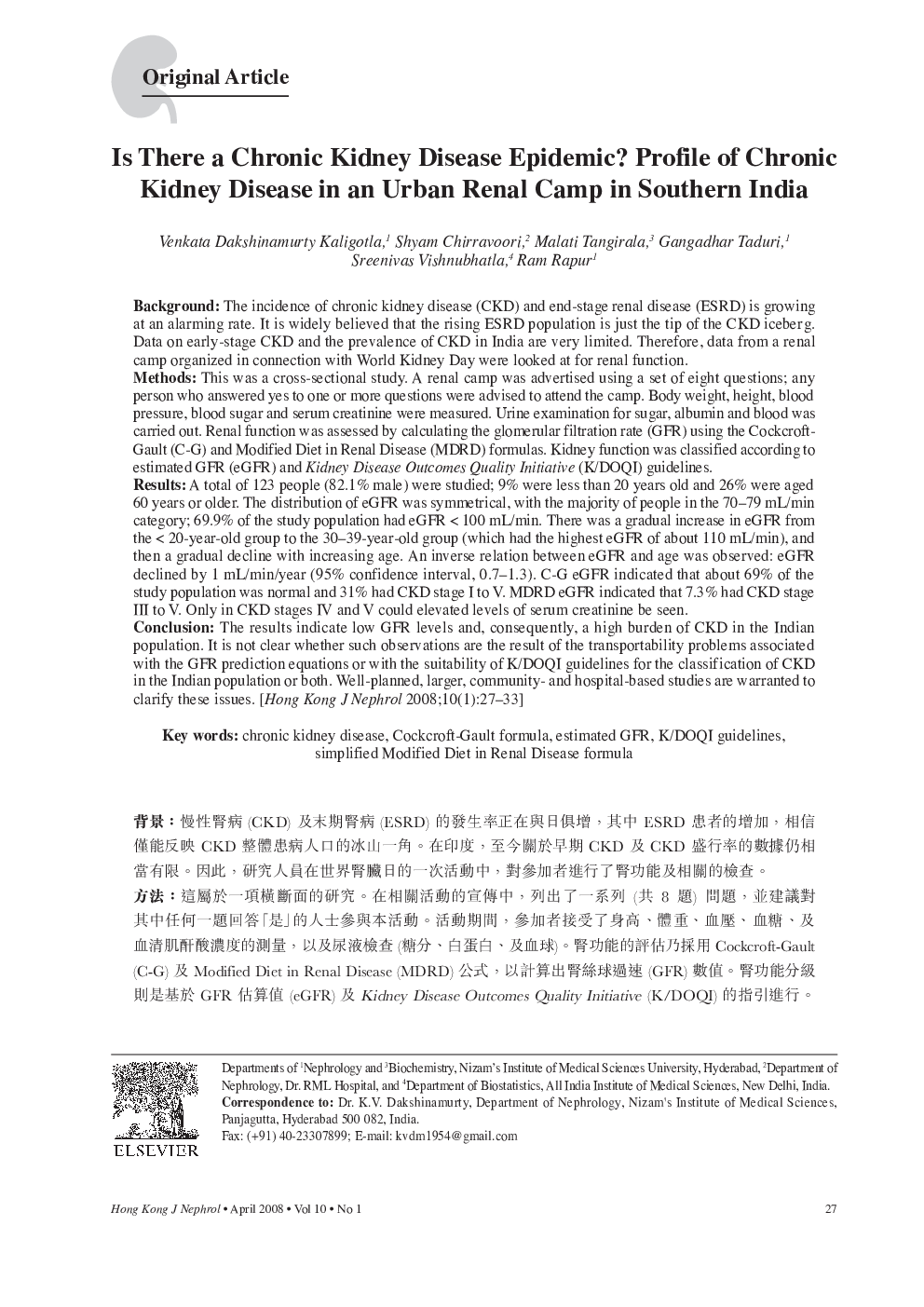| Article ID | Journal | Published Year | Pages | File Type |
|---|---|---|---|---|
| 3854495 | Hong Kong Journal of Nephrology | 2008 | 7 Pages |
BackgroundThe incidence of chronic kidney disease (CKD) and end-stage renal disease (ESRD) is growing at an alarming rate. It is widely believed that the rising ESRD population is just the tip of the CKD iceberg. Data on early-stage CKD and the prevalence of CKD in India are very limited. Therefore, data from a renal camp organized in connection with World Kidney Day were looked at for renal function.MethodsThis was a cross-sectional study. A renal camp was advertised using a set of eight questions; any person who answered yes to one or more questions were advised to attend the camp. Body weight, height, blood pressure, blood sugar and serum creatinine were measured. Urine examination for sugar, albumin and blood was carried out. Renal function was assessed by calculating the glomerular filtration rate (GFR) using the Cockcroft-Gault (C-G) and Modified Diet in Renal Disease (MDRD) formulas. Kidney function was classified according to estimated GFR (eGFR) and Kidney Disease Outcomes Quality Initiative (K/DOQI) guidelines.ResultsA total of 123 people (82.1% male) were studied; 9% were less than 20 years old and 26% were aged 60 years or older. The distribution of eGFR was symmetrical, with the majority of people in the 70–79 mL/min category; 69.9% of the study population had eGFR < 100 mL/min. There was a gradual increase in eGFR from the < 20-year-old group to the 30–39-year-old group (which had the highest eGFR of about 110 mL/min), and then a gradual decline with increasing age. An inverse relation between eGFR and age was observed: eGFR declined by 1 mL/min/year (95% confidence interval, 0.7–1.3). C-G eGFR indicated that about 69% of the study population was normal and 31% had CKD stage I to V. MDRD eGFR indicated that 7.3% had CKD stage III to V. Only in CKD stages IV and V could elevated levels of serum creatinine be seen.ConclusionThe results indicate low GFR levels and, consequently, a high burden of CKD in the Indian population. It is not clear whether such observations are the result of the transportability problems associated with the GFR prediction equations or with the suitability of K/DOQI guidelines for the classification of CKD in the Indian population or both. Well-planned, larger, community-and hospital-based studies are warranted to clarify these issues.
